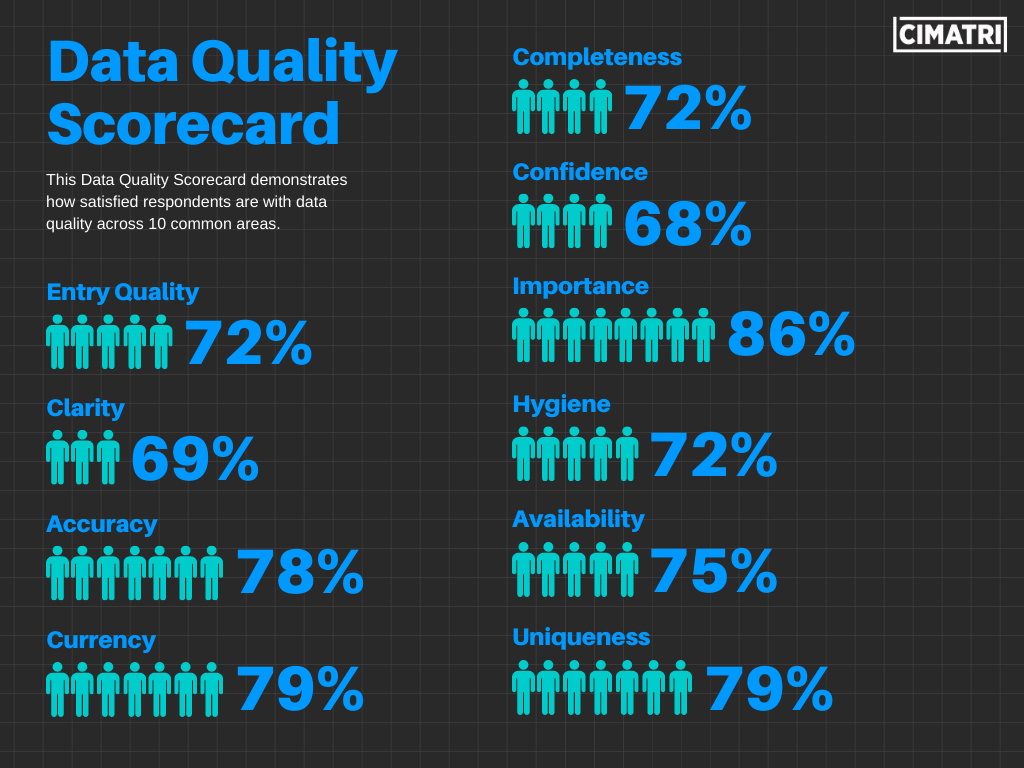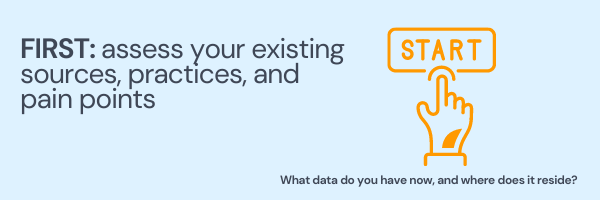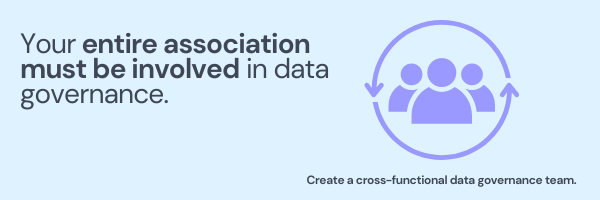The What, Why & How of Data Governance

Data governance is an engine. And like other engines, it needs fuel to power your organization up the data value chain. How you handle the data collected and stored within your organization is not only vital for security and compliance but also for decision making, performance, and financial health.
Yet many associations struggle to get (and keep) their data governance initiatives up and running with the same momentum of their initial efforts.
So let’s start with the basics.
What is Data Governance?
Data governance is a set of principles, practices, and accountabilities
to ensure high quality throughout all phases of the data lifecycle.
One of the top five strategic initiatives for global organizations, data governance relies on high quality data through all lifecycle stages. Which basically means your data must be secure, reliable, accessible, managed, and routinely audited.
But don’t get data governance confused with data management. Yes, they work together and complement each other. But they are quite distinct. Data governance establishes a practical and actionable framework around data, while data management enacts that framework to identify informational needs and drive decision-making.
It’s this data governance framework that keeps data clean, updated, and ready for immediate use.

Why is Data Governance Important?
Data determines the success of your association. And that is even more prevalent as we transition to operating almost entirely in the digital world.
Benefits
A well-maintained data governance framework controls the data standards needed for successful digital transformation, delegates responsibilities, and ensures everyone within your association is on the same page.
Management: ensures the oversight of data assets, their value, and their impact in changing business operations and market opportunities.
Marketing: provides insight into member preferences and behavior, allowing us to deliver personalized experiences.
Sales: allows you to build relationships with members and increase loyalty through personalization.
Finance: provides consistent and accurate reporting and financial forecasting.
Procurement: fortifies cost reduction and operational efficiency initiatives based on data exploitation and business ecosystem collaboration.
Production: allows you to deploy automation.
Legal: improves data security by establishing data ownership and allows you to meet increasing compliance regulations.
Basically what we’re saying is that the better data governance you have, the more secure, leaner, and cleaner your data will be. Which, in turn, allows for better analytics, better decision making, improved operations support, decreased data management costs, better market positioning, better reputation, and all around better performance and profit margin.

Goals
The possibilities are endless if you have a highly functioning data governance framework. With proper data governance you can:
- Make informed decisions based on reliable data that are in alignment with the various purposes for the use of your data assets across your association.
- Define and validate data distribution policies, including the roles and accountabilities of all entities involved, both internal and external.
- Improve data security by establishing ownership and related responsibilities.
- Assign data quality responsibilities to calculate and verify data quality KPIs.
- Create trustworthy, standardized, and multi-purpose data assets to eliminate re-work.
- Meet compliance regulations and avoid fines by documenting all touch-points, access controls, and your data lifecycles.
- Optimize staff effectiveness and business outcomes by providing data assets that meet the desired data quality KPIs.
- Monetize data by ensuring it is stored, managed, classified, and accessible.
- Evaluate and improve your data governance phase-by-phase to secure continuous commitment and support across your organization.
Potential challenges
Before you can decide on an appropriate data governance structure, you must first assess your existing data sources, practices, and organizational pain points.
What data do you have now, and where does it reside? Who’s using that data, and how? What is the common data used across the organization? How complete, clean, and up-to-date is your current data? What data will you keep and for how long? What data will you purge and stop collecting? Which data practices are working, and where are critical gaps?
Once conducting this audit, some challenges may arise when addressing identified gaps and determining the necessary processes needed to maintain data quality. As such, remember to consider how you will:
- identify, collect, and use metadata
- track data completeness, redundancy, and improvement
- ensure data security, backup, archiving, and compliance
You also have to think about how you’ll stay current on local, national, and international data security and privacy laws—and then define specific ways to meet said compliance.
And with the pervasiveness of data security regulations, potential and existing members are more aware of data collection and protection practices. Which means they expect to have control over the use of their personal info and privacy.
That’s why it’s also important to construct a digital identity framework that prioritizes data transparency and gives members control over their individual data.
Best practice: Tell your members right off the bat why you want their data, how it will be used, and how it will improve their member experience.
When they understand your motives and that they are in control of what, when, and how their personal information is used, it builds trust. Meaning members will be more likely to share information with you.

Who is Involved in Data Governance?
To one extent or another, your entire association is involved in data governance.
That’s why the first step for creating a strong data governance practice is to create a cross-functional data governance team composed of your core data asset owners and stakeholders.
At the very least, this team should include representatives from membership, events, finance, publications, marketing/communications, and IT management. Moreover, this team should have the full support of leadership (CEO, CIO, etc) to ensure these best practices are followed soundly throughout the association.
Once team members are solidified, it’s then their job to create clear standards and policies for data governing, as well as plans to implement, enforce, and review those procedures on a routine basis.

Best Practices
Below we’ve outlined a few quick, actionable best practices to get your team started on the right foot. But because every association is different, you must tailor these practices accordingly.
- Conduct a complete audit of existing data sources.
- Set a few measurable and specific goals, and then scale up your efforts with time.
- Define ownership, roles, and responsibilities within your association.
- Develop standardized data definitions that balance centralization and localization.
- Regularly conduct training and education for all employees.
- Identify data domains and elements, starting with those that produce the greatest impact.
- Define control measurements throughout operations, IT applications and reporting.
- Leverage metrics, starting with a small set of data quality KPIs related to general performance KPIs.
- Ensure there is ongoing communication with all stakeholders about the development and implementation of your data governance systems and procedures.
- Map your IT infrastructure, architecture, and tools (i.e. integrating reliable privacy compliance workflows and end-to-end cybersecurity to manage and monitor member consent and preferences).
- Build and implement consistent data oversight and auditing processes.
- Use the data collected and the consent process to deliver personalized experiences.
- Ensure your data governance processes illuminate what data is gathered, how it’s accessed, and what consent members have provided.
- Update your privacy statement to ensure your data practices are consistent with your business’s values.
- Ensure your privacy consent is frictionless, as to not hinder the member experience.
By following these data governance and security best practices, you can avoid legal exposure, minimize data management costs, and deliver superior member experiences starting from the very first impression.
The Wrap Up
Whether you use data governance to grow or to simply meet regulatory requirements, the end result of NOT doing these things is the same: subpar data equals subpar decisions. And the worst part is, you may not realize you’ve made a poor decision until it’s too late.
To build a strong data governance practice, you’ll need the collaboration of all employees from the very get-go and throughout the entire process.
Ready to take the first step toward a solid data governance program? Check out our data quality assessment to help you understand, assess and improve key organizational data quality issues.



